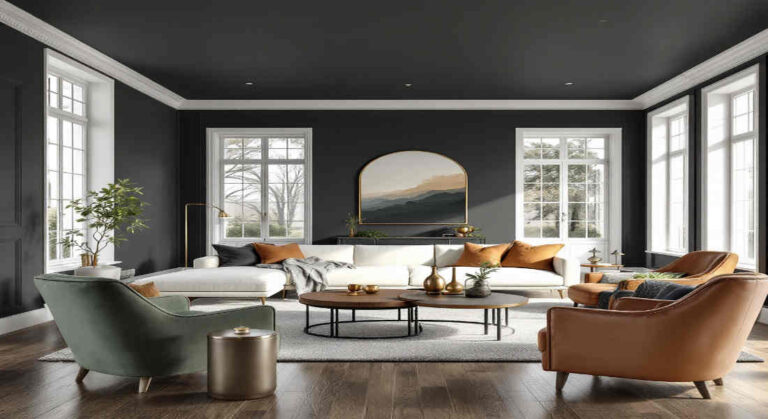Dark gray walls have emerged as a popular choice in modern home design. They are stylish and versatile, creating a dramatic yet calming ambiance. However, to truly bring out the beauty of dark gray walls, pairing them with the right furniture colors is essential. The challenge lies in finding complementary hues and materials that enhance the walls rather than clash with them.
Understanding Dark Gray Walls as a Design Element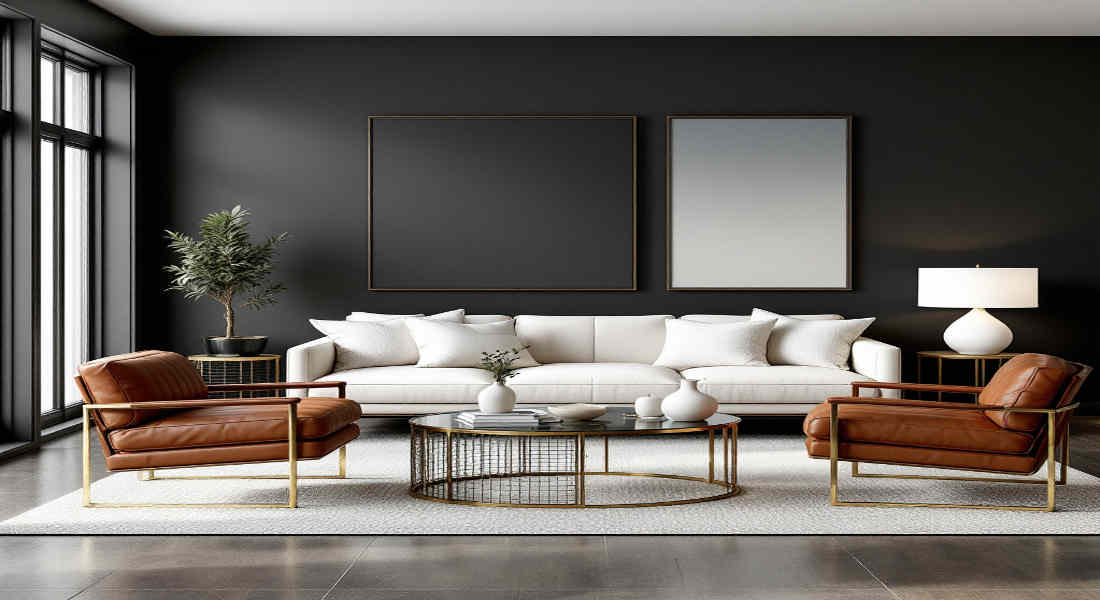
Dark gray walls are a powerhouse in interior design. They exude sophistication, act as a neutral backdrop, and can adapt to various styles and moods. But before diving into furniture color recommendations, it’s important to understand the characteristics of dark gray walls and how they interact with their surroundings.
Characteristics of Dark Gray as a Wall Color
Dark gray is a neutral color, which means it pairs seamlessly with a range of hues and tones. Its versatility allows it to be both understated and bold, depending on how you style the room.
- Sophisticated and Modern: Dark gray walls evoke a sense of elegance and modernity.
- Moody and Dramatic: These walls can create a cozy, intimate atmosphere, especially in low lighting.
- Timeless Appeal: Unlike trendy colors that may go out of style, dark gray has a timeless quality.
The Impact of Undertones in Dark Gray
Not all dark grays are the same. The undertones in your walls can significantly influence how furniture colors appear next to them.
- Cool Undertones: These have hints of blue or green, giving the gray a crisp and modern feel.
- Warm Undertones: These lean toward brown or taupe, adding a cozy and inviting vibe.
How Lighting Affects Dark Gray Walls
Lighting plays a major role in how dark gray walls are perceived:
- Natural Light: Brightens the gray, making it appear softer and less intense.
- Artificial Light: Warm-toned bulbs make gray walls look cozier, while cool-toned lighting enhances the sleekness of gray.
By understanding these nuances, you can make more informed decisions about which furniture colors will work best in your space.
Key Considerations Before Choosing Furniture Colors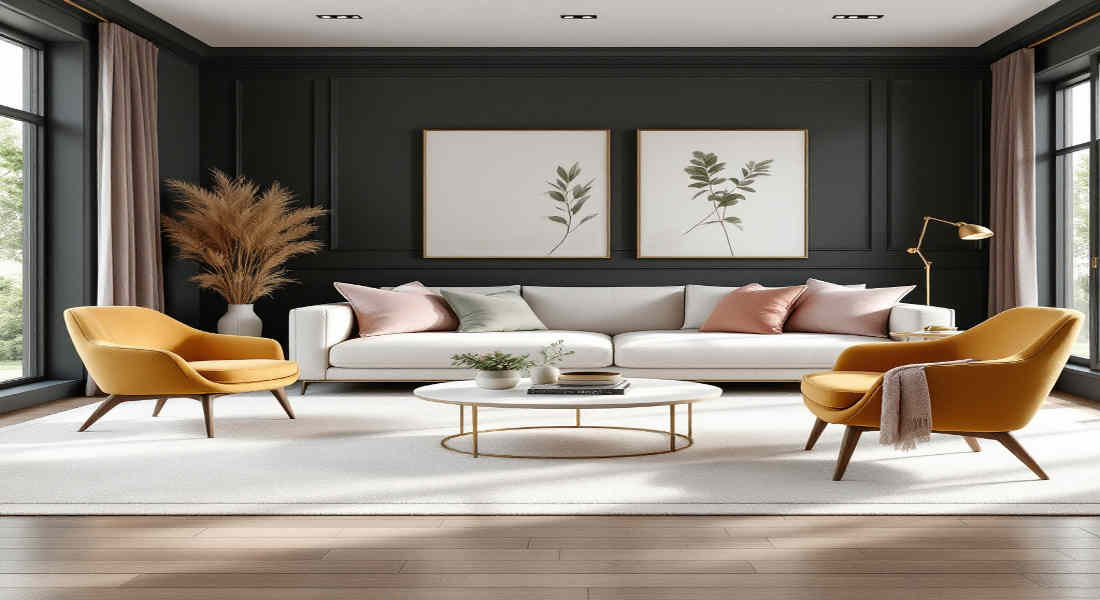
Before diving into specific colors, please take a moment to evaluate your room and its unique elements. Choosing furniture is not just about aesthetics; it’s about creating harmony in the space.
Assessing Undertones of Your Walls
As mentioned earlier, the undertones in your dark gray walls will dictate which colors work well. For instance, cool gray walls may pair better with blues and whites, while warm gray walls complement browns and beiges.
You may also read (how can i personalize my rented house decor).
Room Size and Natural Lighting
- Small Rooms: Lighter furniture can help offset the darkness of the walls, making the room feel more open.
- Spacious Rooms: Darker furniture can create a sense of luxury and balance.
Existing Room Finishes
Take note of finishes, such as flooring, trims, and built-in features. Wooden floors, for example, pair beautifully with warm-toned furniture, while glossy tiles might call for sleek, modern pieces.
Design Style and Mood
Your interior design style will heavily influence your furniture choices. Consider the mood you want to create:
- Modern Minimalism: Stick to neutral tones and clean lines.
- Cozy and Rustic: Opt for warm wood tones and plush textures.
- Eclectic: Experiment with bold pops of color and unique furniture pieces.
What Color Furniture Goes with Dark Gray House Walls?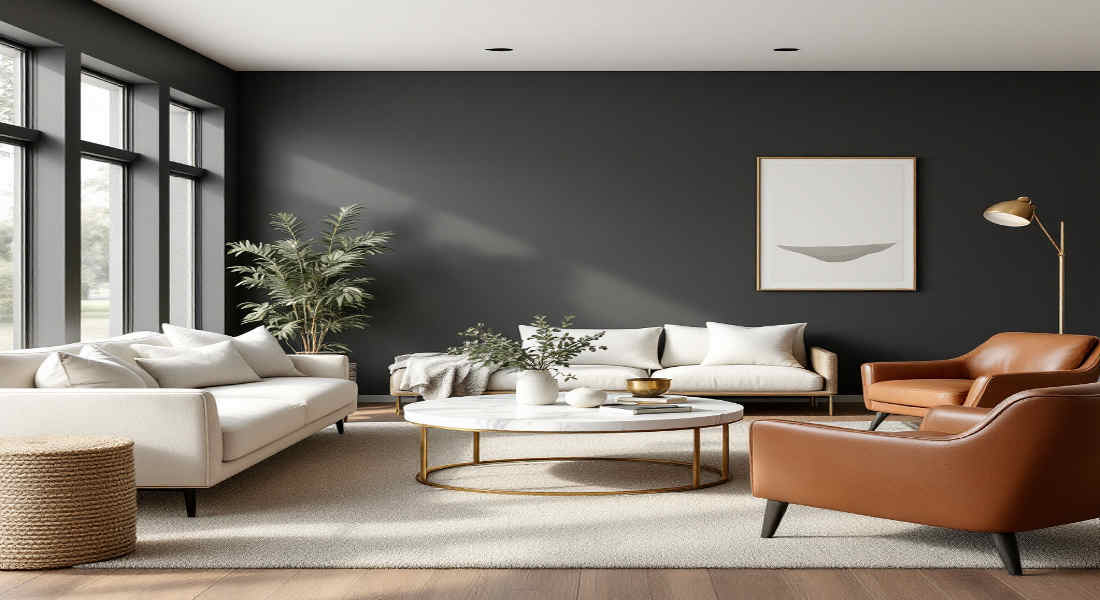
Now, let’s dive into the heart of the matter: what color furniture goes with dark gray house walls? We’ll break this down into neutral options, bold accents, and materials that enhance the overall look.
Neutral Furniture Colors
Neutral tones are a go-to choice because they blend effortlessly with dark gray walls, maintaining a clean and cohesive look.
White Furniture
White furniture creates a crisp and bright contrast against dark gray walls. It’s perfect for modern or minimalist interiors, adding a sense of airiness to the room.
Light Brown and Wood Tones
Natural wood tones, like oak or walnut, add warmth and texture to dark gray spaces. They balance the coolness of gray and create a welcoming atmosphere.
Beige and Taupe
Soft neutrals, such as beige and taupe, provide a subtle, harmonious blend. They’re ideal for creating a calm, understated look.
You may also read (how to determine if youre overpaying for a house).
Charcoal and Black
For a more dramatic vibe, consider darker neutrals, such as charcoal or black. These create a tone-on-tone effect that feels sophisticated and mature.
Bold and Accent Furniture Colors
If you’re looking to make a statement, bold accent colors can add personality and energy to dark gray walls.
Yellow
Yellow is a vibrant and cheerful color that can brighten up dark gray spaces. Consider adding a yellow accent chair or cushions for a pop of energy.
Navy Blue
Navy blue complements the depth of dark gray while adding a calming and rich tone. It pairs beautifully with natural woods and metallics.
Green (Hunter or Olive)
Earthy greens, such as hunter or olive, bring a natural, grounding feel to dark gray interiors. They’re especially effective when paired with rattan or wooden furniture.
Red or Burgundy
Rich reds and burgundies create a luxurious and dramatic contrast. Use these as statement pieces, such as a velvet sofa or an accent cabinet.
Textures and Materials to Consider
The furniture materials you choose can further enhance the interplay between the walls and the furniture.
Material Effect on Dark Gray Walls
- Natural Woods Adds warmth and an organic touch
- Rattan/Wicker: Perfect for boho or casual vibes
- Metals (Brass) Bring a modern or industrial edge
- Upholstery (Velvet) Adds luxury and highlights bold furniture colors
Styling Tips for Pairing Furniture with Dark Gray Walls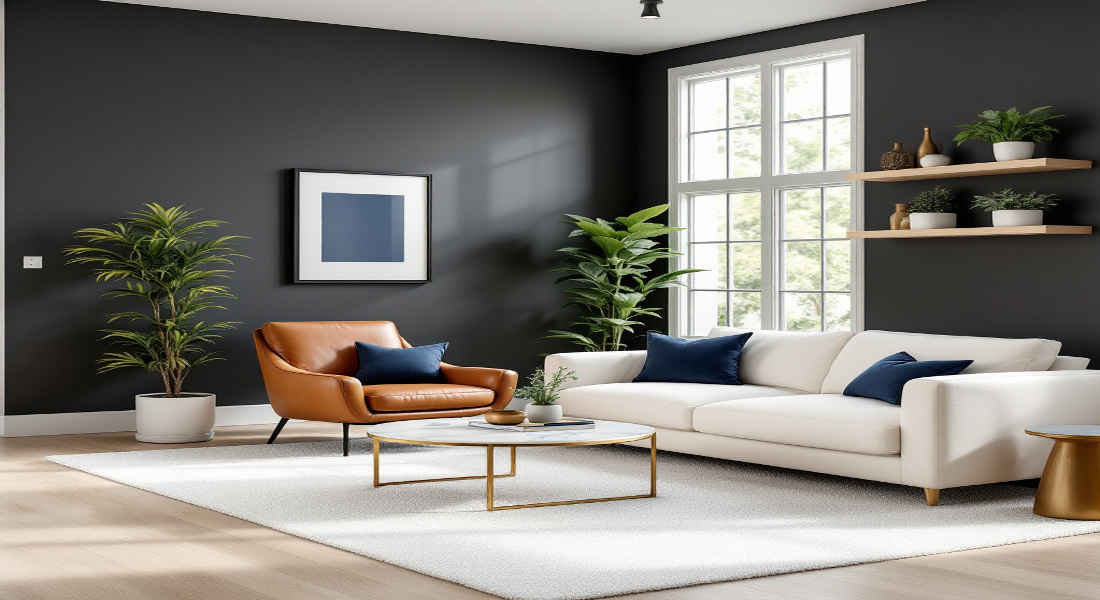
Here are some practical tips to ensure your furniture and dark gray walls create a stunning visual harmony:
- Mix Light and Dark: Balance dark gray walls with lighter furniture to avoid a gloomy space.
- Layer Textures: Add dimension to the room with textured throws, rugs, and cushions.
- Incorporate Artwork: Use wall art to tie the furniture and walls together.
- Break Up Monotony: Use metallics, mirrors, or plants to add variety.
Common Mistakes to Avoid
Even the best intentions can go awry. Watch out for these common pitfalls:
- Too Much Darkness: Avoid pairing dark gray walls with overly dark furniture unless the room is well-lit.
- Ignoring Undertones: Mismatched undertones can make the room feel off-balance.
- Overusing One Color: A lack of variation can make the space feel flat.
Real-Life Examples and Inspiration
Imagine a living room with dark gray walls, a soft beige sectional sofa, and a natural oak coffee table. Add in navy blue cushions and a brass floor lamp for a perfectly balanced look.
Or, picture a bedroom with dark gray walls, a white upholstered bed frame, and hunter-green accent chairs. The combination exudes elegance and freshness.
You may also read (diy guide repairing peeling paint on home furniture).

